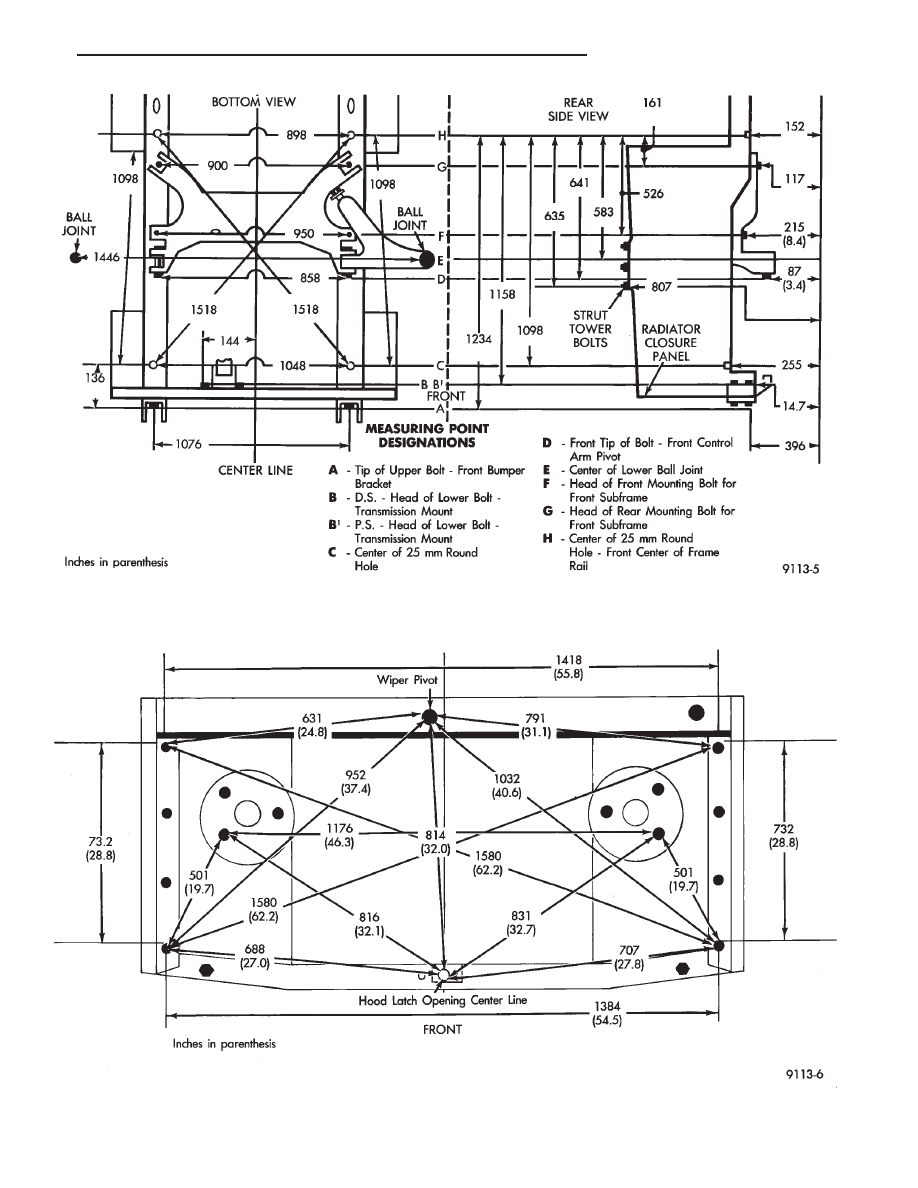Chrysler Town & Country/Voyager, Dodge Caravan, Plymouth Voyager. Manual - part 13

Fig. 10 Dimensions Forward of Gage Hole Rear of Crossmember— All Van/Wagons
Fig. 11 Engine Compartment Dimensions—All Van/Wagons
.
FRAME AND BUMPERS
13 - 7
Index Chrysler Chrysler Town & Country/Voyager, Dodge Caravan, Plymouth Voyager - service repair manual 1992 year
|
|
|

Fig. 10 Dimensions Forward of Gage Hole Rear of Crossmember— All Van/Wagons Fig. 11 Engine Compartment Dimensions—All Van/Wagons . FRAME AND BUMPERS 13 - 7 |